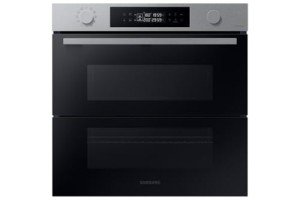Built-In Ovens in the UK: A Comprehensive Guide
Built-in ovens have become a vital feature in modern cooking areas throughout the UK, offering both performance and design. They are created to fit flawlessly into kitchen cabinetry, providing a sleek and integrated look that complements modern kitchen styles. This short article explores the advantages of built-in ovens, the different types offered, key functions to consider, and regularly asked questions that will help customers make informed choices.
Advantages of Built-In Ovens
Picking a built-in oven comes with numerous advantages, which consist of:
- Space-Saving Design: Built-in ovens are designed to fit within kitchen cabinets, making them ideal for smaller sized spaces where free-standing systems might take up excessive room.
- Visual Appeal: These ovens offer a clean, modern-day appearance that boosts the overall look of the kitchen. They can be placed at eye level, making them available while reducing flexing or bending.
- Integrated Technology: Many built-in ovens come equipped with sophisticated cooking technologies, including convection cooking and self-cleaning functions, making cooking more effective and problem-free.
- Increased Resale Value: A modern-day, stylish kitchen with built-in appliances can considerably increase a home's resale value, making it more attractive to potential purchasers.
- Variety of Options: Built-in ovens can be found in various sizes and styles, enabling homeowners to select one that fits their specific kitchen design and cooking needs.
Types of Built-In Ovens
Built-in ovens are offered in various configurations, each dealing with various cooking designs and choices. Here are the main types:
| Type of Built-In Oven | Description |
|---|---|
| Single Ovens | These ovens come with one compartment, generally ideal for basic baking and roasting needs. |
| Double Ovens | Featuring 2 compartments, double ovens allow for synchronised cooking at various temperature levels, making them ideal for large families or those who frequently amuse guests. |
| Mix Ovens | Combining a traditional oven with a microwave, these versatile systems conserve space and time, allowing for quick heating and cooking. |
| Steam Ovens | Using steam cooking technology, steam ovens are ideal for healthy cooking, retaining moisture and nutrients in food while offering a special cooking technique. |
| Wall Ovens | Installed greater up in the kitchen, wall ovens can be single or double. They allow simple gain access to while maximizing space on the counter. |
Key Features to Consider
When choosing a built-in oven, it's vital to evaluate particular functions. Consumers ought to think about:
- Size and Capacity: Determine the space readily available in your kitchen and choose an oven that fits easily without overwhelming the style.
- Energy Efficiency: Look for ovens with greater energy ratings, as they can save money gradually and are more eco-friendly.
- Cooking Functions: Different ovens featured different cooking modes-- such as baking, barbecuing, and rotisserie. Assess which functions cater to your cooking style.
- Control Options: Newer designs typically include touch controls, digital interfaces, and wise innovation that enables for remote operation by means of smartphone apps.
- Self-Cleaning Features: Many built-in ovens included self-cleaning alternatives, significantly streamlining oven maintenance.
- End up and Design: Choose surfaces-- like stainless steel, black, or white-- that enhance the general kitchen aesthetic.
Popular Brands in the UK
Several brand names control the built-in oven market, each offering numerous functions and cost points. A few of the most popular alternatives consist of:
- Bosch
- Siemens
- Neff
- Samsung
- Hotpoint
- AEG
- Miele
These brand names are known for their reliability, development, and client service, making them a relied on choice for customers.
Frequently Asked Questions (FAQs)
1. Are built-in built-in / integrated hobs oven than freestanding designs?
Built-in ovens tend to be more expensive than freestanding models due to their customized sizing, styling, and advanced features. Nevertheless, they supply higher value in regards to looks and functionality.
2. Can I set up a built-in oven myself?
While some helpful house owners might try a DIY setup, it is frequently advised to employ a professional to ensure proper setup, especially worrying electrical and pipes connections.
3. How do I tidy my built-in oven?
Many built-in ovens featured self-cleaning alternatives, which considerably reduce the effort needed. For models without this feature, regular cleansing with non-abrasive cleaners and a soft cloth is necessary for maintenance.
4. What is the average life expectancy of a built-in oven?
Typically, built-in ovens can last between 10 to 15 years, depending on use and upkeep. Regular servicing can help extend the appliance's life expectancy.
5. Can I change a built-in oven with a various brand?
Yes, built-in ovens can normally be changed with any suitable model, however it is vital to ensure that the brand-new oven matches the existing cut-out space in the kitchen cabinetry.
Built-in ovens use an advanced mix of utility and style, making them an integral part of modern-day kitchen areas in the UK. With numerous types, unique features, and a range of choices readily available from widely known brand names, homeowners have ample options to select an oven that fulfills their cooking requirements and kitchen looks. By comprehending the advantages, types, and vital features, consumers can make educated choices that boost their culinary experiences. Whether for everyday meals or special occasions, a built-in oven is a financial investment that promises convenience and quality for many years to come.

